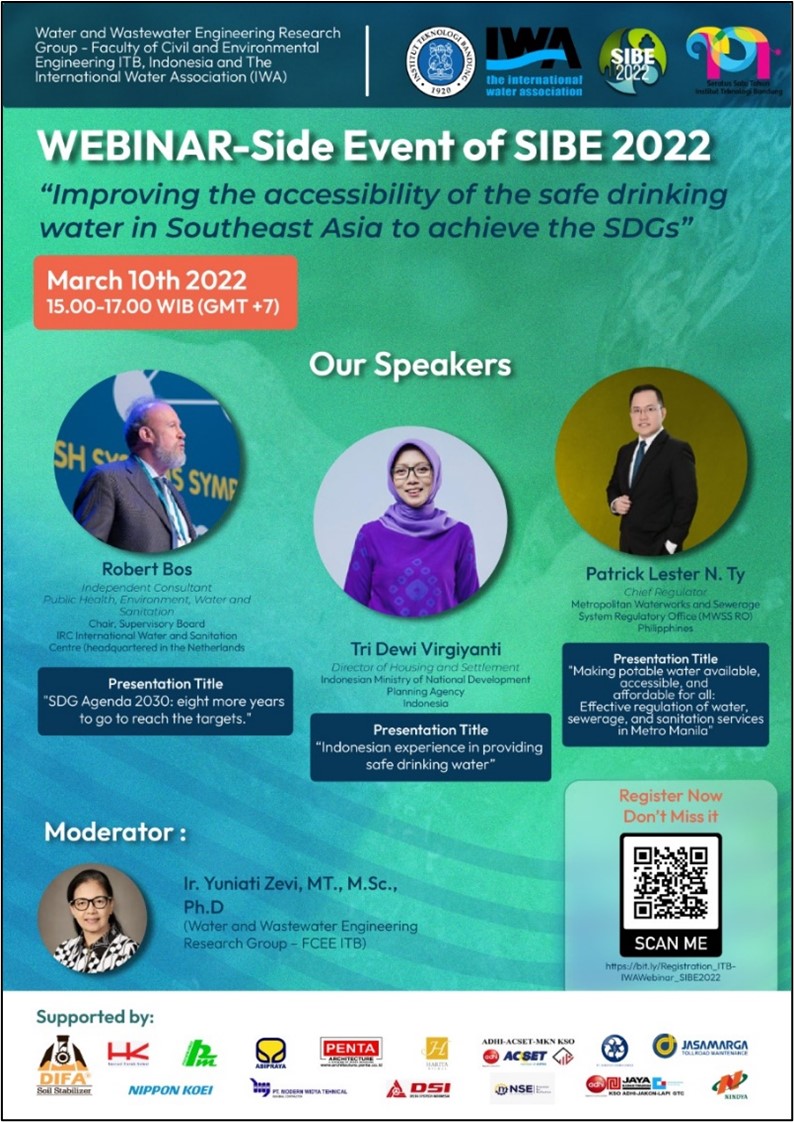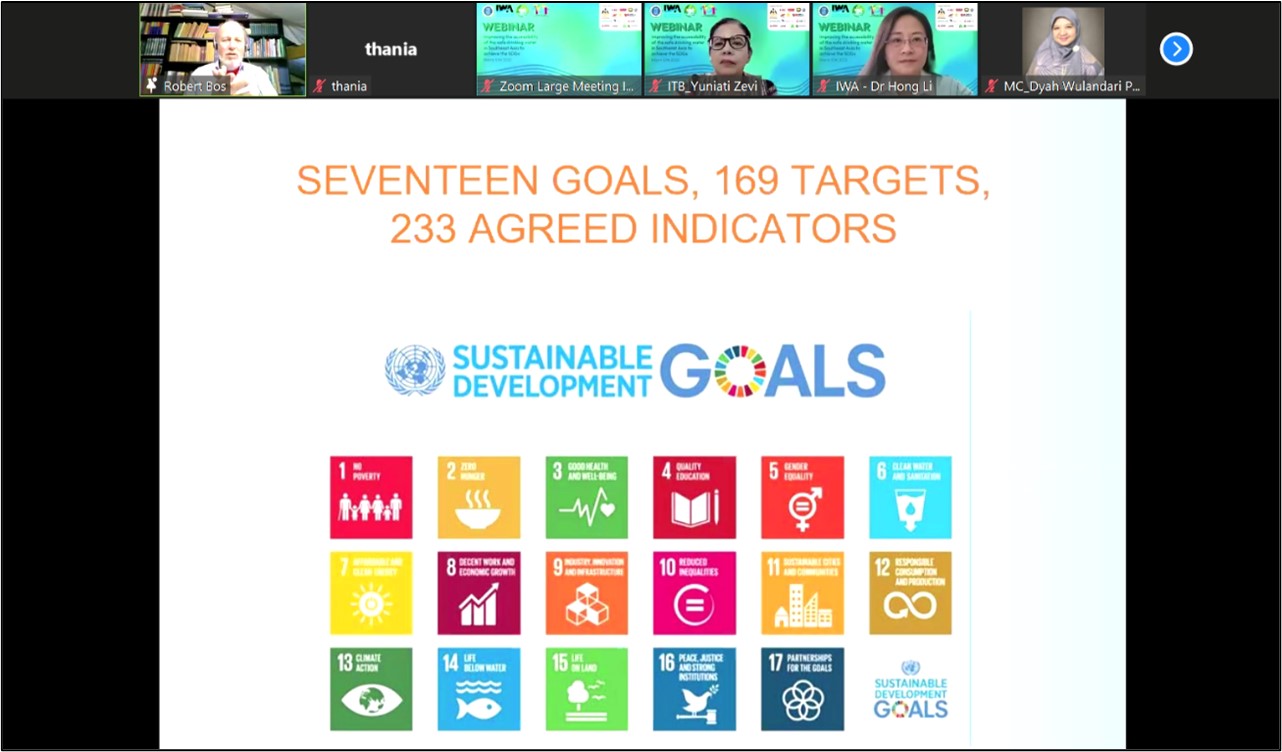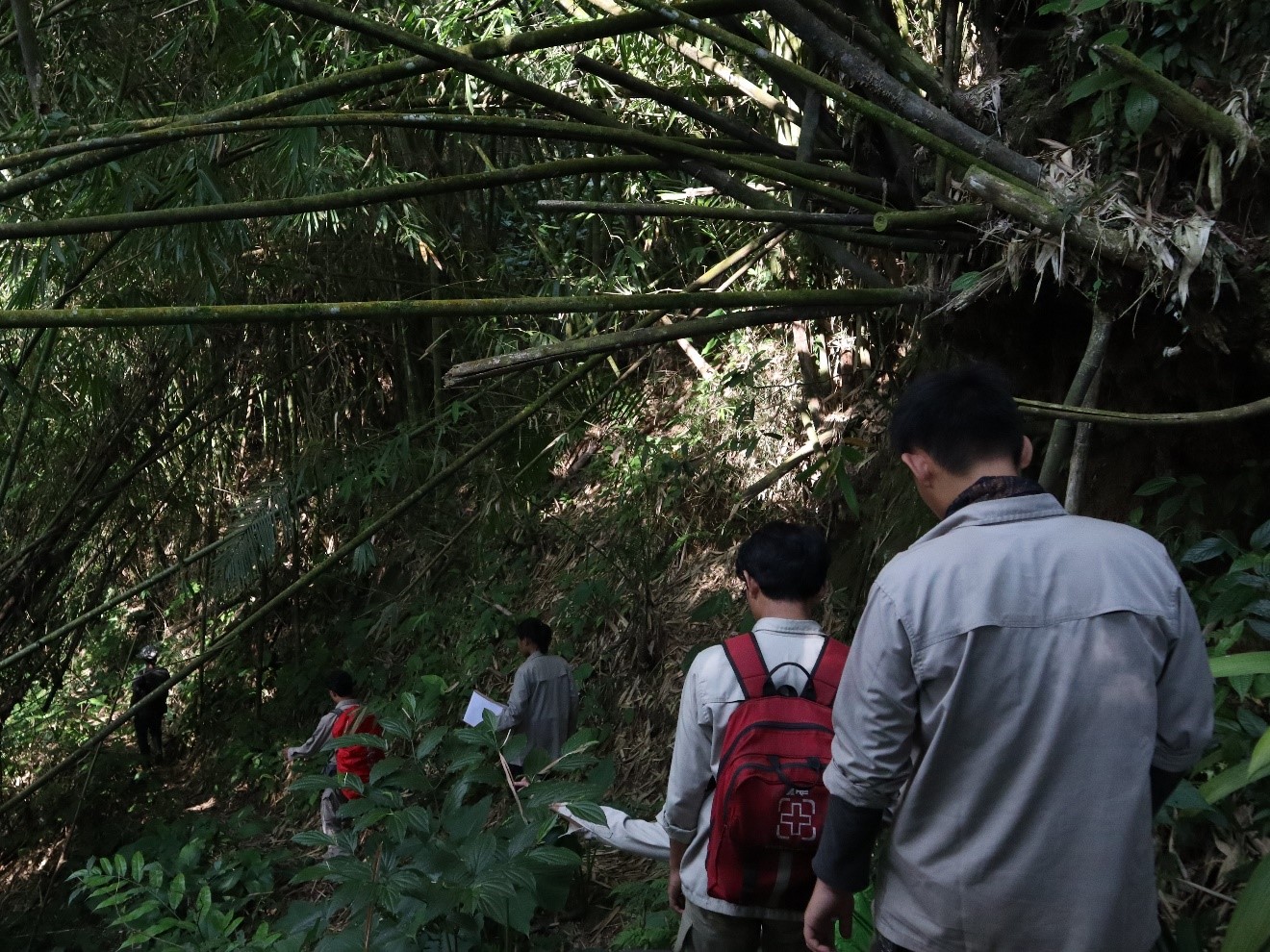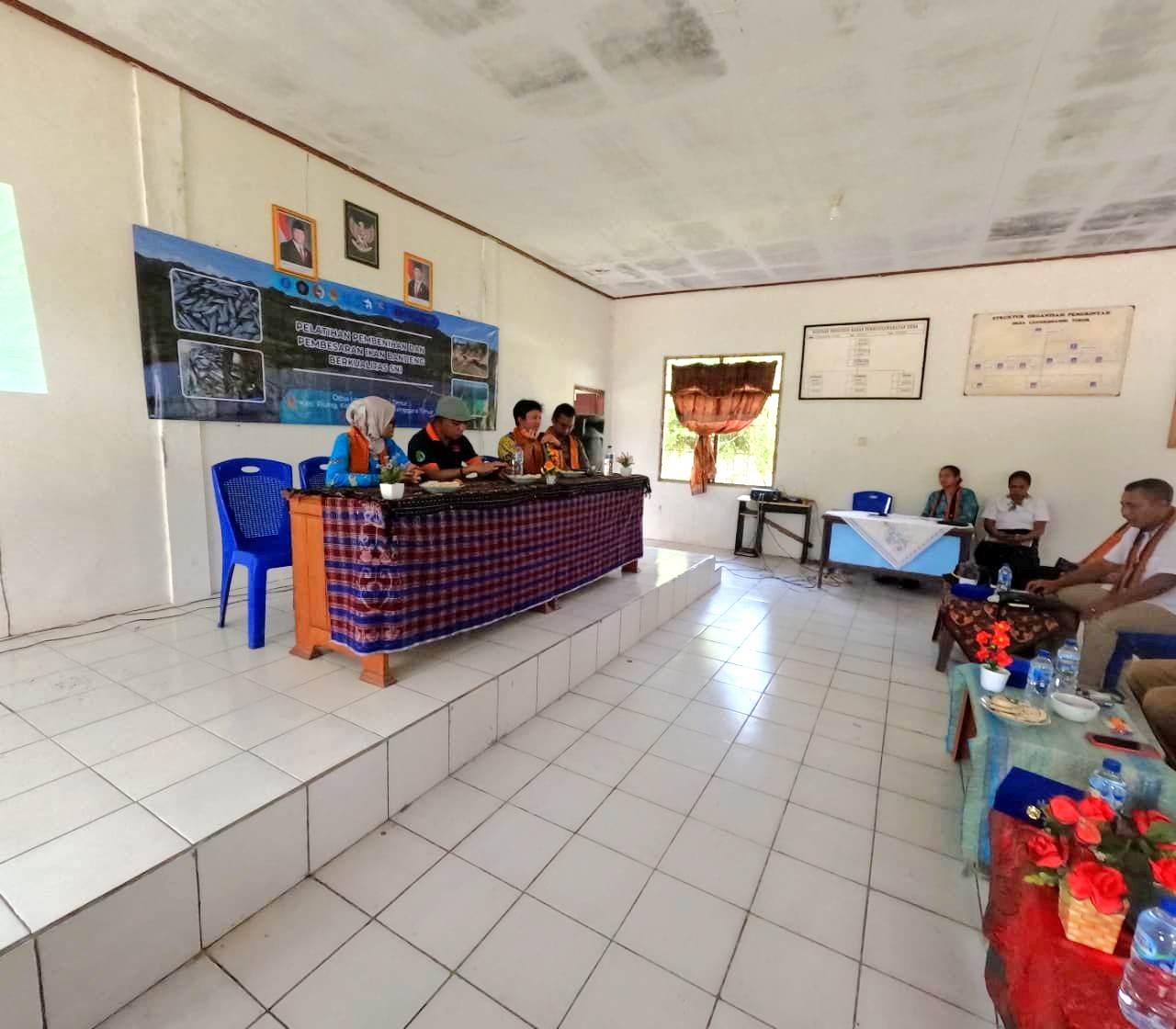SIBE 2022: Increasing Clean Water Accessibility and Availability in Southeast Asia
By Adi Permana
Editor Adi Permana

BANDUNG, itb.ac.id – Water availability is essential for the livelihoods of the world. Several countries have too much water while others have too little; both do not benefit the people, especially in Indonesia. Not only does the supply of safe and clean drinking water supply vary in different regions, but accessibility to it is still insufficient.
One of the key events in SIBE 2022 was the webinar “Improving the Accessibility of Safe Drinking Water in Southeast Asia to Achieve the SDGs” held on Sunday (10/03/2022). Organized by the ITB Water and Wastewater Engineering Research Group as well as IWA (International Water Association), the webinar invited three guests to discuss the current safety of drinking water in Indonesia and the solution to improve its quality. These speakers were Robert Bos, Tri Dewi Virgiyanti, and Patrick Lester N. Ty.
“Access to clean water is extremely important. Unfortunately, many people face difficulties in getting drinking water in Southeast Asia,” the Dean of ITB FCEE (Faculty of Civil and Environmental Engineering), Ir. Edwan Kardena, Ph.D., declared. Those residing in coastal areas, for instance, are unable to receive clean water despite being near the sea. There was the idea of purifying seawater into drinkable freshwater; however, the cost is expensive.
Dr. Hong Li, the Director of IWA in Asia and Oceania, added that climate change worsened the quality and supply of water and public sanitation. 2.2 million people have zero access to hygiene whereas more than 4 million people lack access to safety and sanitation management services. “It is crucial for us to work together through international, interdisciplinary, and intersectoral means to guarantee both water safety and public sanitation.”
Both hoped these concerns can be further discussed to reach the best solutions to fixing Southeast Asia’s dire water issue.
Robert Bos, who works as an independent consultant and the Head Supervisor of Public Health, Environment, Water and Sanitation in IRC (International Water and Sanitation Centre), Amsterdam, presented his topic “The SDG Agenda 2030: Eight More Years to Achieve the Goals”. As the coordinator of the WASH (Water Sanitation and Health) program at WHO, he stated that all SDG targets are equally important to achieve societal welfare. One of them, the 6th SDG, ascertains the sustainable availability and management of water and sanitation for all.
The target was set so that every person can universally receive adequate and equitable services. This can be accomplished by improving water quality, increasing the efficiency of water utilization, ensuring a sustainable way of withdrawing and supplying freshwater, and implementing integrated water source management. Other efforts include conserving and restoring water ecosystems, expanding collaborations and international support, and strengthening local community participation by 2030.
Albeit the well-prepared plans, many still suffer from poor water and sanitation services. If no actions are taken, 1.6 million of the population will have no access to drinking water while 2.8 million cannot safely access health services. Currently, almost half of the global population experience inadequacy of safe sanitation services in their houses. Hence, Robert emphasized the four upcoming water issues that must be dealt with: water scarcity, poor water quality, absence or damage of related facilities/infrastructures, as well as fragmentation of governmental and institutional structures.

The next session was continued by Tri Dewi Virgiyanti, the Director of Housing and Establishments from BAPPENAS as well as an alumnus of the ITB Environmental Engineering Study Program in 1995. In her discussion “Indonesia’s Experience in Providing Safe Drinking Water”, she informed that SDGs can be used to improve the nation’s economy, community, and biosphere via the provision of clean water and sanitation.
The 6th SDG is implemented in the national development plan where the safety fundamentals of treated water are formulated. In 2030, Indonesia aims for a 100% increase in access to water, 30% in security, and 50% in piping distribution to the community. These objectives will succeed if the performance of drinking water management focuses on improving the water source, accessibility, availability, and quality. Compared to the percentage of drinking water access and availability via piping systems in other countries, Indonesia’s existing condition is still deficient. Hence, Indonesia needs to expand its drinking water accessibility via pipes.
One of the projects presently executed by BAPPENAS is providing access to piped drinking water with the following strategies: development of supporting infrastructures to manage raw water, capacity utilization of facilities, decreased non-revenue water use, and expansion of regional SPAM installations. Dewi added that these strategies can solve drinking water matters by observing the demands of people, institutions, regulations, finance, and infrastructures to ensure an excellent output.

The last discussion was conveyed by the Head Regulator of MWSS RO (Metropolitan Waterworks and Sewerage System Regulatory Office) in the Philippines, Patrick Lester N. Ty. “There are two water treatment centers in the concession areas, namely Maynilad and Manila Water,” he stated in his presentation “Making Potable Water Available, Accessible and Affordable for All: Effective Regulation of Water, Sewerage and Sanitation Services in the Concession Area”. 90% of Manila's MWSS water sources originated from the Angat Dam, the main water source for Metro Manila. 10% of it came from Laguna Lake. Both have problems in terms of water provision; the Angat Dam has a low water supply while the Laguna Lake has poor water quality.
With the increase in water demand, insufficient infrastructure, and lack of new water sources, the growing Metro Manila population was hit by a water crisis in 2019. Patrick noted that few communities had no choice except to depend on toxic or expensive water due to circumstances. Thus, they suffered from restricted use of water, limited financial conditions, and dwindling health plus sanitation.
These projects that manage water accessibility to communities are devised to search for more raw water sources and maintain water conservation. Transparency, accountability, and participatory governance of water and sanitation information are essential for public consultation and further publication.
Reporter: Ruth Nathania (Environmental Engineering, 2019)
Translator: Ruth Nathania (Environmental Engineering, 2019)

.jpg)
.jpg)
.png)
.jpg)
.jpg)



